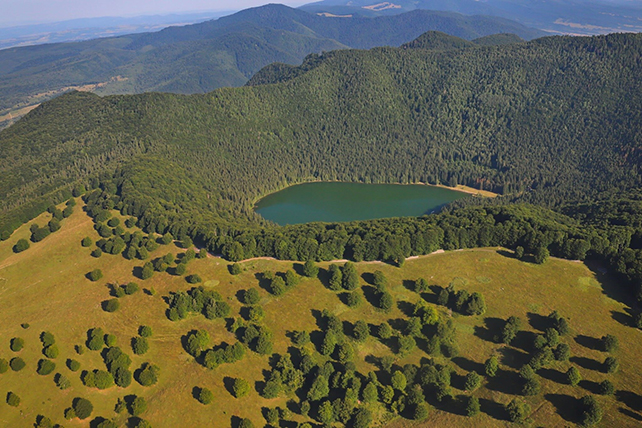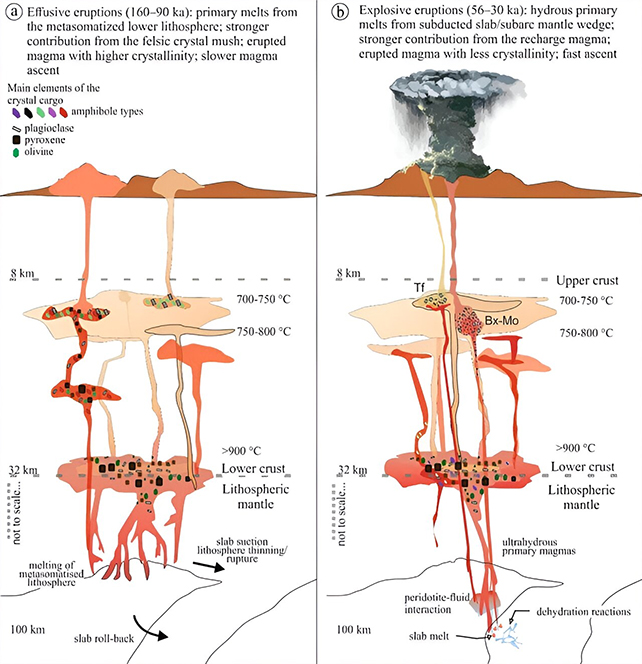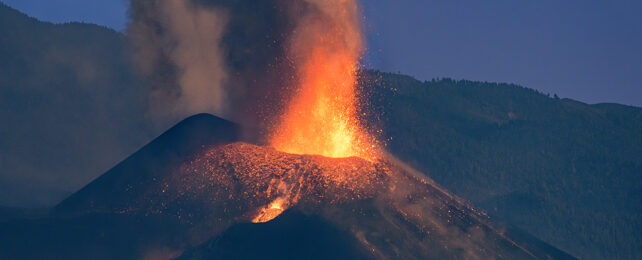A recent study of the Ciomadul volcano in Romania highlights just how quickly – and how powerfully – long-dormant volcanoes can erupt.
One of the youngest volcanoes in eastern-central Europe, Ciomadul hasn't erupted for some 30,000 years. Through a sophisticated geological analysis, a team of European scientists has shed more light on the cycle of volcanic activity that Ciomadul has gone through over the millennia.
In particular, the team wanted to look at the change in eruption type over a lengthy period of time, from the more gentle effusive (a steady downhill flow of lava) to the more dangerous explosive (a sudden release of gases and lava under intense pressure).

"There have been several long periods of dormancy in the almost million-year life of the volcano, but even after tens of thousands, sometimes even more than 100,000 years of quiescence, volcanic eruptions started again," says geochemist Szabolcs Harangi from Eötvös Loránd University in Hungary.
The team undertook a careful study of the crystals and minerals inside volcanic rocks around Ciomadul: the chemical composition and water content of these rocks give experts clues as to the eruption conditions that form them, and when they were created.
Having previously established that there was an earlier period of effusive eruptions, here the team concentrated on the most recent, explosive eruption period – from roughly 56,000 years ago to roughly 30,000 years ago.

The analysis revealed two magma zones, an upper zone (8 to 12 kilometers or 5 to 7 miles) deep and a lower zone (16 to 40 kilometers) deep. How the magma enters the surface appears to depend on the origins of this recharge magma.
If it's mostly composed of melted lithosphere then the chemicals allow for a slow release, but if oceanic slab enters the mix the chemistry becomes more explosive.
According to the researchers, the crystallinity and increased water content of the magma emerging from the recharge zone will have played a significant role in the switch from effusive to explosive eruptions after a break of some 10,000 years or so.
"[The most recent eruptions] were formed by more dangerous, explosive eruptions compared to the previous active episode," says geochemist Barbara Cserép from Eötvös Loránd University.
"So, it is important to know what was the reason for this change in eruption style."
It's well known that explosive eruptions can blast out of volcanoes that have been quiet for a long, long time – so it's crucial to understand more about that process. While Ciomadul doesn't look like erupting anytime soon, it's still a useful case study.
One of the ways in which the research can be useful is in helping to spot the signs of an imminent eruption. When it comes to the 1,350 or so potentially active volcanoes on Earth, our best way of staying safe is getting early warnings.
"Eruption of volcanoes – irrespective of their magnitude – poses a significant, but often underrated risk on modern society," write the researchers in their published paper.
The research has been published in Contributions to Mineralogy and Petrology.
